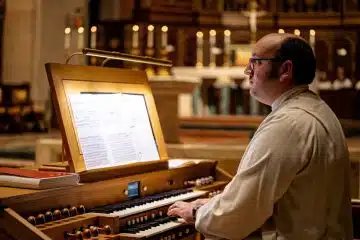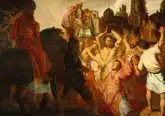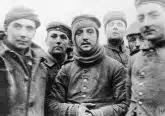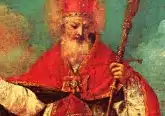Was Squanto Catholic? What we know about this hero of the first Thanksgiving
St. Louis, Mo., Nov 24, 2022 / 08:00 am
In 1621, lacking both the skills and the resources necessary to survive in the harsh territory of New England, European pilgrims encountered a miracle: a Native American who not only spoke English but who also used his skills and knowledge to help the Pilgrims adapt to their environment and survive the brutal winter.
This was Squanto, a man who occupies a special place in the hearts of many people who celebrate Thanksgiving because of his willingness and ability to help the newcomers to his land.
Squanto’s full name was Tisquantum, and he was a member of the Patuxet tribe, which lived in and around modern-day Plymouth, Massachusetts. He was probably born around 1585 in the area that is now Boston.
Little is known about Tisquantum’s early life, but what is known is that he was abducted from his homeland as a slave by an Englishman, Thomas Hunt, in 1614. He ended up in Malaga, Spain, where a group of Franciscans bought him in order to free him. It is apparently thanks to these Franciscans that he received baptism and became Catholic, though it is not clear to what extent he was catechized and practiced his new faith.
Damien Costello, a Catholic historian and theologian, told CNA that the historical record portrays “a very skillful agent” in Tisquantum who was able to change his situation and engage with European culture. He was able to find employment as a translator in England and later convinced a wealthy financier to fund an expedition back to his homeland.
When Tisquantum finally made it back to where his tribe lived in present-day Massachusetts, his life took a tragic turn. He found that his entire tribe, while he was in Europe, had been wiped out by disease — he was the sole survivor.
The Pilgrims arrived in New England in 1620 and were far from the first Europeans to set foot on those shores — this was many years after Jesuit missionaries had started missionary activity in the area but hadn’t settled. When the Pilgrims arrived in what had once been Patuxet territory, the empty land made a good place to settle. Tisquantum, no doubt mourning the loss of his people, was nevertheless able to deftly reinvent himself as an intermediary between the Pilgrims and Native leaders.
In March 1621, the chief of the Wampanoag confederation, Massasoit, went to meet with the Pilgrims and brought Tisquantum along to translate. After negotiations fell apart, Tisquantum stayed with the Pilgrims and helped to facilitate what we now know as the first Thanksgiving — a meal between the Pilgrims and the Natives of the area. Tisquantum died the next year, in 1622.
So, was Tisquantum a Catholic? Costello says it is likely he was baptized and thus, theologically, he was indeed a Catholic. Native American culture was very spiritual, and Costello said he doesn’t think it unlikely that Tisquantum saw his baptism as a positive spiritual experience.
“Catholicism was a crucial ingredient in Squanto’s resiliency, the regenerative principle that gave spiritual power to sustain the disjunction of being a global citizen in a world forever turned upside down,” Costello later wrote in an article for U.S. Catholic.
As to whether Tisquantum continued to practice his Catholic faith for the rest of his life, there’s little evidence to say for sure. In a very real sense, God only knows.













